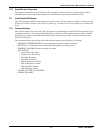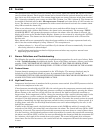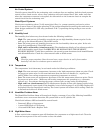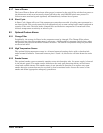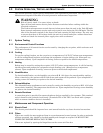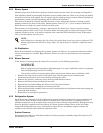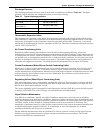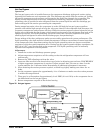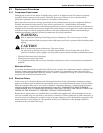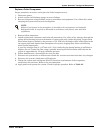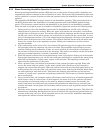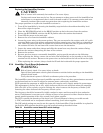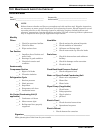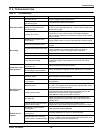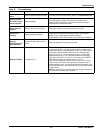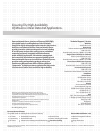
System Operation, Testing and Maintenance
61 Liebert
®
Mini-Mate2
™
9.3.3 Steam Generating Humidifier-Operation Procedures
Steam generating humidifiers operate efficiently over a wide range of water quality conditions and
automatically adjust to changes in the conductivity of water. The system will automatically drain and
refill to maintain a current set point and alert the operator when the humidifier canister needs to be
replaced.
The humidifier RUN/DRAIN switch is located in the humidifier assembly. This switch should be in
the RUN position when the humidifier is in normal operation and in the DRAIN position during
service. The electronic control board for the humidifier is also located in the humidifier assembly.
When the unit is energized, power is available to humidifier. Operation involves the following steps:
1. During start-up, when the humidity control calls for humidification, the fill valve will open,
allowing water to enter the canister. When the water level reaches the electrodes, current flows
and the water will begin to warm. The canister fills until the amperage reaches the set point and
the fill valve closes. As the water warms, its conductivity increases and the current flow, in turn,
rises. If the amperage reaches 115% of the normal operating amperage, the drain valve opens and
flushes some of the water out of the canister. This reduces electrode contact with the water and
lowers the current flow to the amperage set point. Boiling soon commences and the canister
operates normally.
2. If the conductivity of the water is low, the canister fills and the water level reaches the canister
full electrode before the amperage set point is reached. The humidifier stops filling to prevent
overflow. Boiling should commence in time. As water is boiled off, the mineral concentration in
the canister increases and current flow also increases. The canister eventually reaches full output
and goes to normal operation. No drain is permitted until then.
3. When full output is reached the circuit board starts a time cycle which is factory-set at 60 seconds.
During this repeating time cycle, the fill valve will open periodically to replenish the water being
boiled off and maintain a “steady state” output at the set point. The amperage variance will
depend on the conductivity of the water.
4. After a period of time, the mineral concentration in the canister becomes too high. When this
occurs, the water boils too quickly. As the water quickly boils off and less of the electrode is
exposed, the current flow decreases. When the current crosses the low threshold point (factory-set
at 85%) before the end of the time cycle, the drain valve opens, draining the mineral laden water
out and replacing it with fresh water. This lowers the mineral concentration and returns the
canister to “steady state” operation and prolongs canister life. The frequency of drains depends on
water conductivity.
5. Over a period of time, the electrode surface will become coated with a layer of insulating material,
which causes a drop in current flow. As this happens, the water level in the canister will slowly
rise exposing new electrode surface to the water to maintain normal output. Eventually, the
steady state water level will reach the canister full electrode and indicate so by activating the
canister full alarm. At this point, all of electrode surface has been used up and the canister should
be replaced.
6. After the entire electrode surface has been coated, the output will slowly decrease. This allows for
maintenance scheduling. During these last hours of electrode life, the mineral concentration can
increase and arcing can occur. If the electrodes start to arc, turn off the humidifier immediately
and replace the canister with the identical part.



